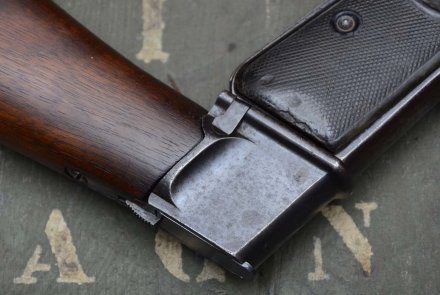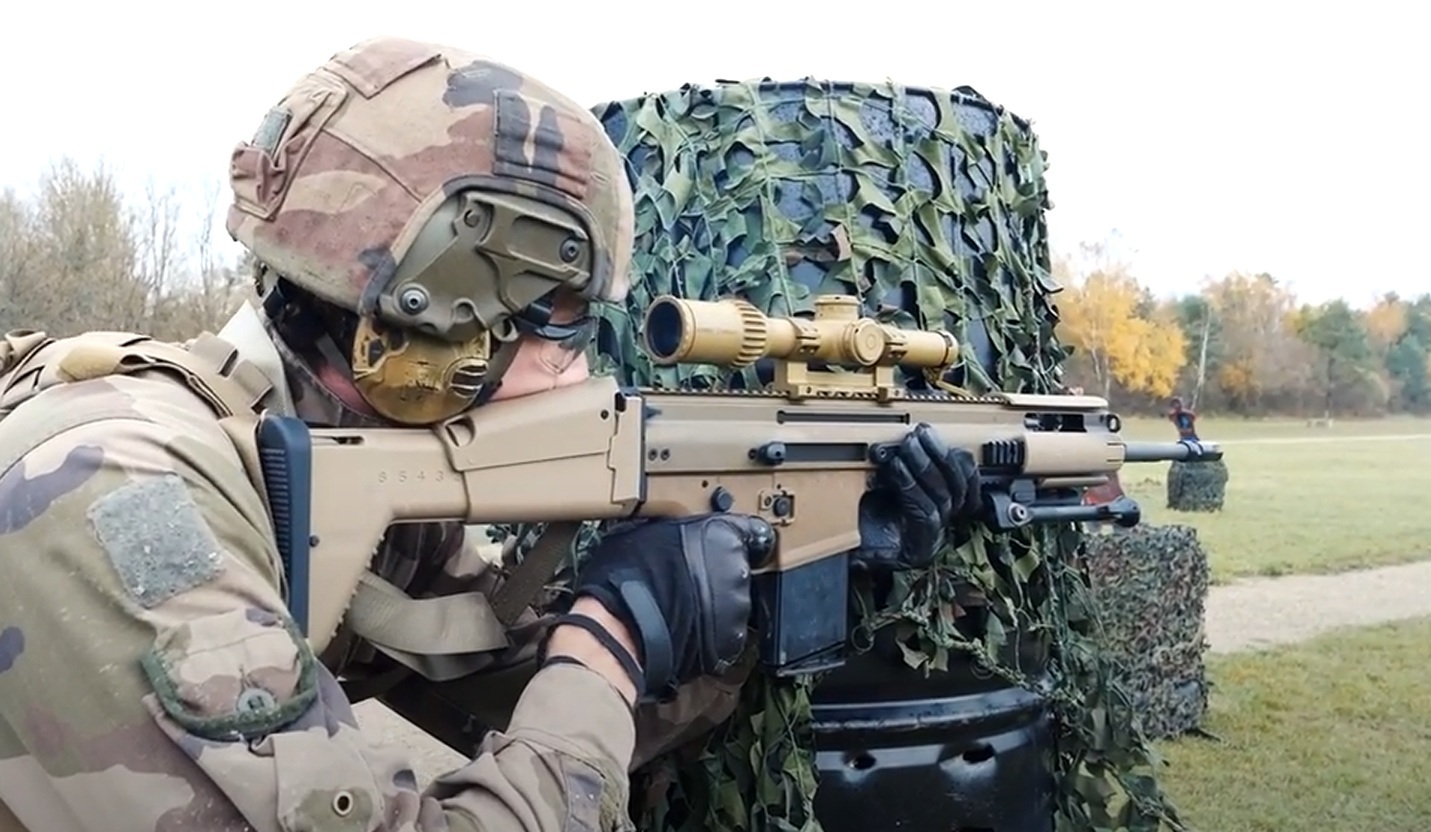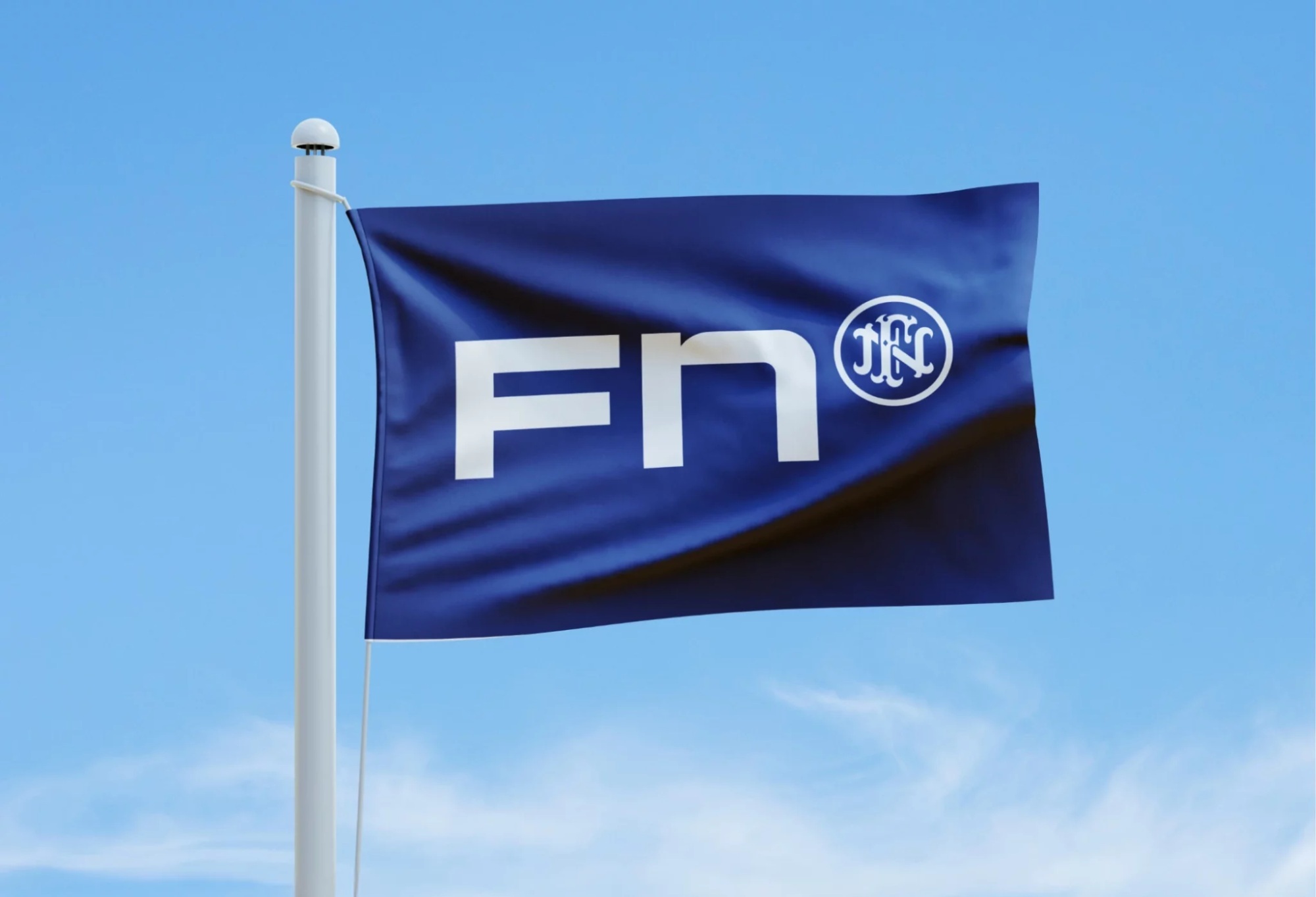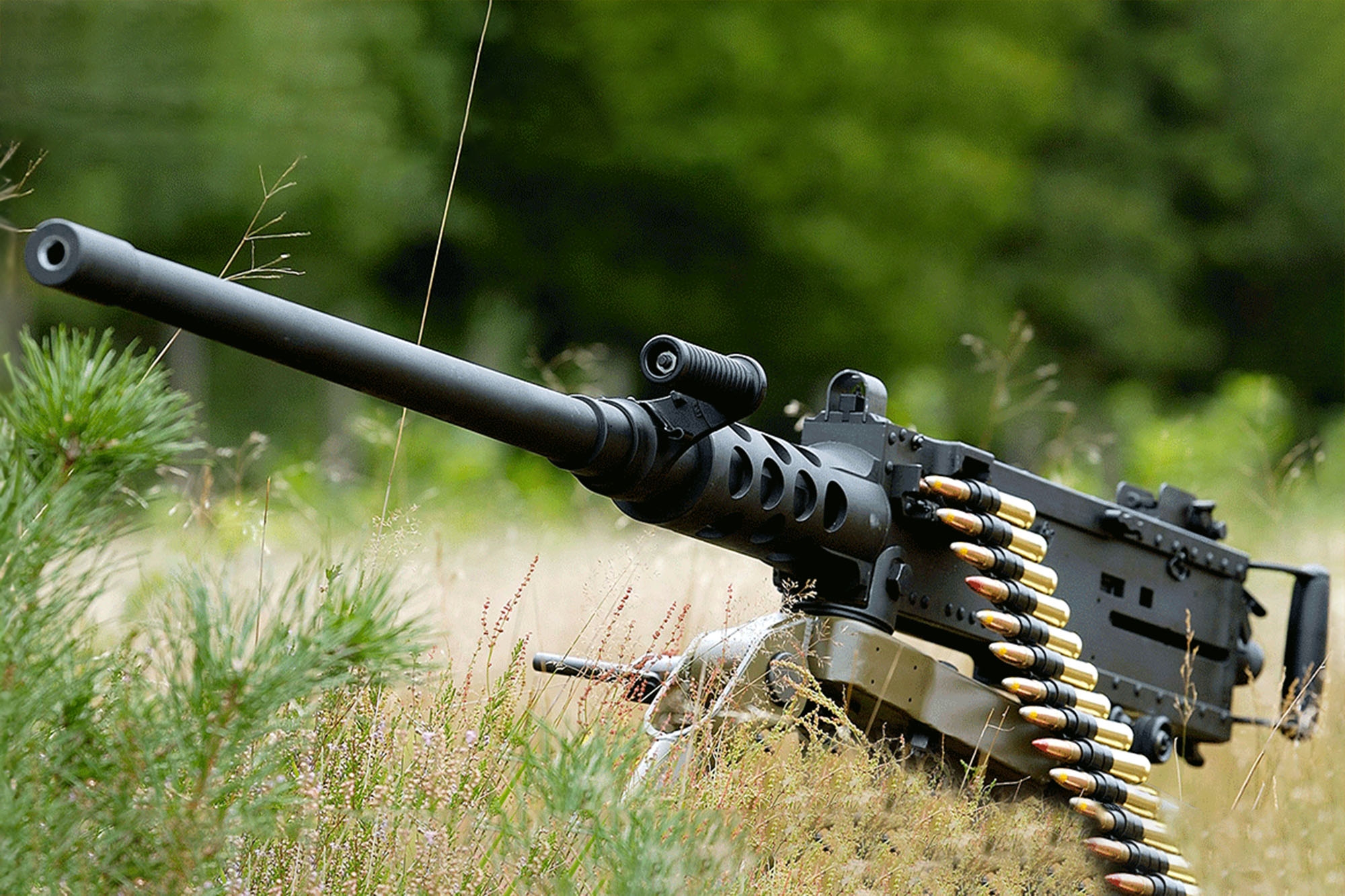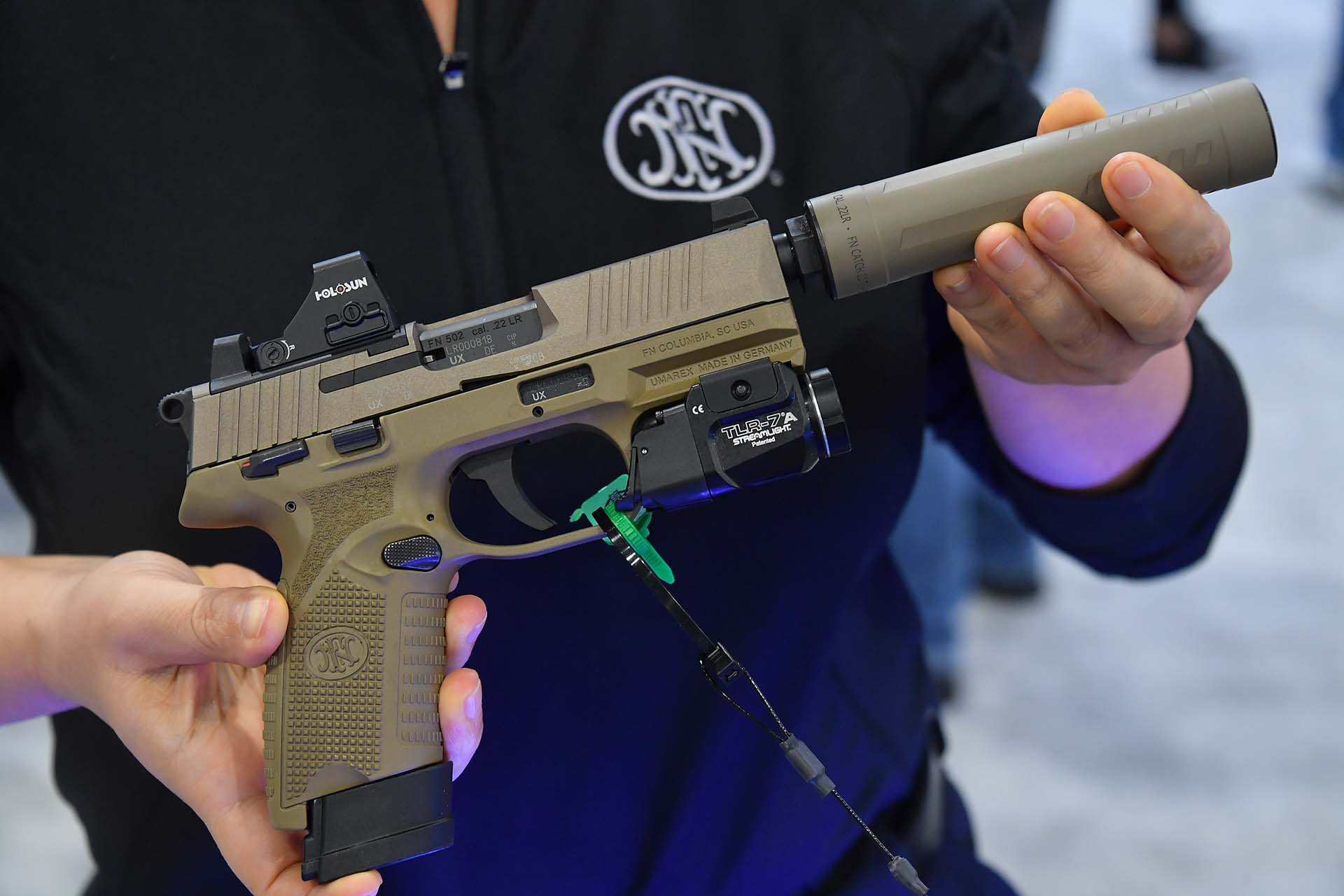The FN Model 1903 semi-automatic pistol, also known as the M1903, FN Mle 1903 or Browning No.2, or even Browning Modèle de Guerre, was a semi-automatic pistol designed by John Moses Browning and built by the Fabrique Nationale (FN) in Herstal, Belgium. As its name suggests, it was introduced in 1903, chambered in 9×20mm SR, also and especially called 9mm Browning Long. Manufactures at the beginning of the 20th century, the Model 1903 was born as a competitor to the Mauser C96 and Luger P08 pistols on the European market, compared to which it has a much more modern and simplified design, with a slide that completely covers the barrel, which was not at all taken for granted at the time, and a blowback-operated system. Time would prove Browning and his idea of a semi-automatic pistol right, which still today follows the classic layout with the barrel completely enveloped by the slide, the recoil spring positioned under the barrel and the box magazine in the grip. It should be noted that while in Europe production of the Browning Modèle de Guerre was dragging on, in the USA Colt was enjoying great success with its 1903 Pocket Hammerless pistol, also based on a similar (but not identical) design by John Moses Browning and chambered in .32 ACP (aka 7.65 Browning) and .380 ACP (aka 9mm Short). The American 1903 was made in over half a million pieces and was also adopted by the army, which kept it in service until the 1970s.
The version produced in Belgium had a more limited success than its American cousin, but was nonetheless encouraging: it was adopted by Sweden, Colombia, the Ottoman Empire, Russia and again by Denmark, Chile, Estonia and other countries. In Sweden, where it was adopted by the armed forces, it was also manufactured under licence by Husqvarna under the name m/1907.
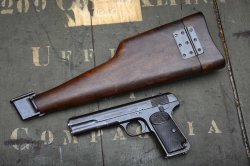
Serial production of this pistol ran from 1908 to 1928 and an estimated 60,000 were produced. Many of these ended up on the US market where they were rechambered in the more common .380 ACP (9mm Short). The one we photographed at the Gunstore Bunker armoury in Milan, Italy, is a rare version of the FN Model 1903 complete with a wood shoulder stock/holster, considered an essential accessory for military pistols at the time. Little it matters that the caliber and the little more than rudimentary sights are not very well suited to long-distance target shooting: after all, collector's firearms are also interesting for these that today seem like oddities to us. Probably in a hundred years, gun enthusiasts will wonder what the Picatinny rails on the frame or the optic-ready slides on contemporary pistols were really for.
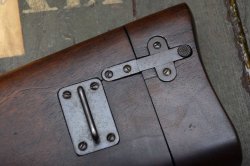
The FN Model 1903 was a semi-automatic pistol with a single-action trigger and internal hammer, fed from a single-stack magazine with a capacity of seven rounds in 9mm Browning Long. In this version, thanks to the shoulder stock attachment, an extended 10-round magazine can be used. The walnut stock contains the spare magazine and the cleaning brush. According to some sources, Russia had purchased a batch of 5,000 FN 1903s with this configuration, but the news may be unreliable. Underlining the pistol's military ambitions is the lanyard ring on the left side of the grip, which at the time was considered an essential feature for pistols intended for combat use. The heel magazine release at the base of the grip would become another typical control on early semi-automatics.
The barrel of the FN 1903 measures 127 millimetres (5 inches) and the gun weighs 930 grams.

The set we photographed is very rare, especially considering its overall condition. In fact, the gun has the original bluing in excellent condition and has matching serial numbers. The pistol and stock, on the other hand, have fairly close but not identical serial numbers, probably due to a mix-up in the armory.
The 9mm Browning Long, a rare but still produced cartridge
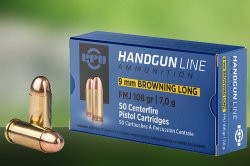
One of the most interesting aspects of this pistol is the 9×20mm SR caliber, also known as 9mm Browning Long, a cartridge developed in 1903 by FN to be fired in the blowback-operated M1903 semi-automatic pistol. It was a weaker version of the 9mm Parabellum and not interchangeable with it. The case of the 9mm Browning Long is 20mm long and the cartridge is a semi-rimmed type, so it head-spaces on the rim. The bullet weighing 7 grams (108 grains) exits the muzzle of a standard barrel at a velocity of 350 meters per second and with an energy of 429 joules, values slightly lower than a standard 9x19mm but which allowed its safe use in blowback pistols such as the protagonist of this article or its version adopted by the Swedish army, the Husqvarna 1907. Despite the limited number of pistols chambererd for it, the 9mm Browning Long cartridge is still industrially manufactured today by the Serbian PRVI Partizan.
Wrapping up
The Browning 1903 helped shape the very concept of semi-automatic pistol. The brainchild of John Moses Browning's extraordinary design skills, it had a rather long gestation period, but was certainly worth it. Simple and reliable (it was made up of only 27 parts), it already had everything that today is considered essential in a handgun, and even something more. Admittedly, the cartridge it fired was weak and the magazine had low capacity, but this did not detract from its status as a progenitor. The stocked version adds a touch of curiosity to a remarkable and, in this particular case, very well preserved conversation piece.
FN 1903 technical specifications
| Manufacturer: | Fabrique Nationale D'Armes de Guerre, Herstal (Belgium) |
| Model: | Model 1903 |
| Caliber: | 9mm Browning Long (9x20mm SR) |
| Magazine Capacity: | 7 or 10 rounds |
| Operation: | Blowback |
| Barrel Length: | 5"/127 mm |
| Sights: | Fixed fron sight, adjustable rear notch |
| Trigger: | Single action |
| Weight: | 790 g |
| Notes: | Version with shoulder stock and extended magazine |






